History
Critical Essay - Censorship
May/11/2022 09:39 AM Filed: Critical Essays

Artist: Piotr VaGla Waglowski
(Wikimedia Commons)
If offensive words are removed from language, would the definition of "offensive" change? A desire to extract a derogatory moniker or blunt description will result in certain individuals classifying the action as noble, a necessary purging of negative thoughts that should not be in a person's mind. Censorship has an ultimate goal—control.
A power struggle lurks beneath the surface of every deletion and every rewrite if the intention skulks behind political warfare. Like a cyberattacker, a censor disables a natural flow of communication. Obstruction is not only unethical and inhuman, it is impossible. Getting rid of ugly nouns, sarcastic innuendos, and scathing adjectives will accomplish nothing. Manipulation of language does not eliminate social problems; this treacherous process triggers unrest.
Disinformation and misinformation, terms coined by hired evaluators, refer to disputable content. Viewpoints differ, a manifestation of cultural, religious, and philosophical beliefs, including scientific shifts that alter the foundation for an accurate statement. Science evolves, changing as new information emerges. Squelching discourse, attempting to make knowledge rigid, halts discovery.
Libraries worldwide store books, magazines, newspapers, videos, and audio recordings that contain material someone wants to censor. As targets are established and editing begins, where does this expurgation propose to end?
After infinite directives and endless redlining, freedom of expression will be hyperregulated, while angry people pick through a word dump, like scavenging through a landfill hunting for deleted information. Archaic mistakes haunt these censors.
Critical Essay - Romantic Pulp
January/14/2022 02:49 PM Filed: Critical Essays
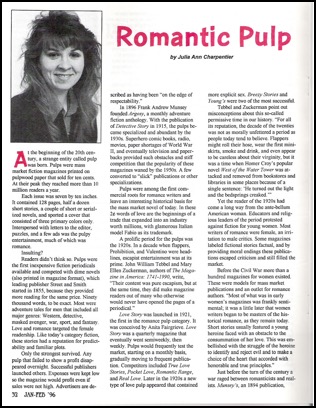
At the beginning of the twentieth century, a strange entity called pulp was born. Read about the historical roots of romance fiction in my January-February 1996 article published in the Romance Writers Report.
Profile - Ana Leigh: Author Spotlight
August/24/2021 09:37 AM Filed: Profiles
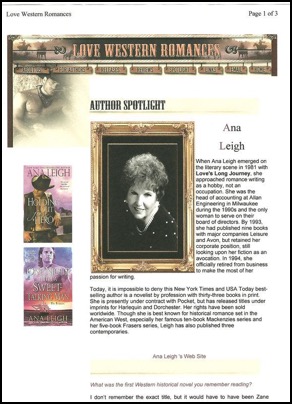
Read my April 2009 interview in Love Western Romances with Ana Leigh (1929-2015), an outstanding New York Times and USA Today bestselling historical romance novelist. Her books have been sold worldwide, and today she remains an icon in the publishing industry.
Profile - Valentino and the Art of Silent Romance
August/18/2021 03:50 PM Filed: Profiles
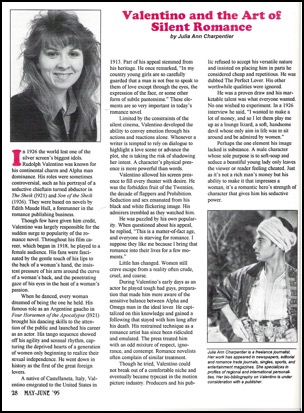
Known for his continental charm and Alpha man dominance, Rudolph Valentino was largely responsible for the sudden surge to popularity of the romance novel during the silent film era. Read my May-June 1995 article published in the Romance Writers Report.
Profile - Valentino: The Silver Screen's First Sex Symbol
January/19/2021 03:33 PM Filed: Profiles
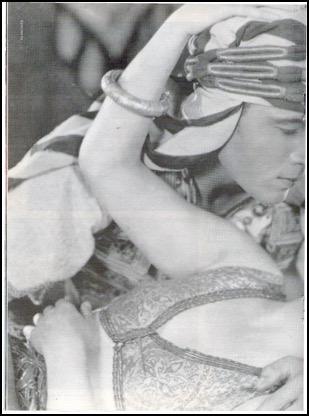
When you hear the name "Valentino," you instantly think of passion and romance. But how much do you know about the man behind the steamy image? Read this June 1996 profile featured in Remember.
Impressions - Theodore Roosevelt
January/07/2021 03:16 PM Filed: Impressions
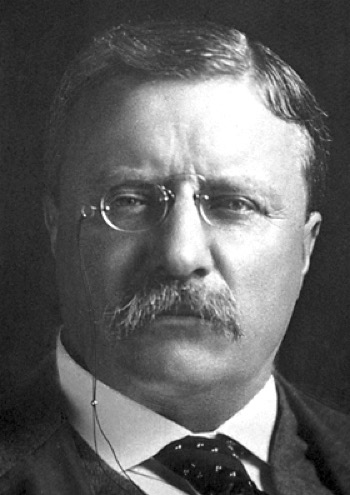
"We believe in conservatism; but it is a conservatism not of timidity, not of mere stolidity, it is the conservatism of good sense. We do not intend to be spurred into rash action or to be frightened out of action that is needed by the circumstances of the case." —Theodore Roosevelt, June 4, 1903, Indianapolis, Indiana—
Nobel Peace Prize Photo, 1906
Apple Books - Jack London
November/28/2023 11:40 AM Filed: Apple Books
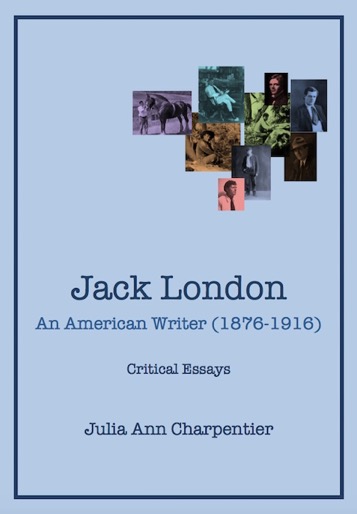
A collection of seven critical essays, JACK LONDON: AN AMERICAN WRITER (1876-1916) reveals a complicated figure with a literary persona and a mass-market image. London rose from a working class background in Oakland, California, to prominence as one of the most famous and prolific authors in the world. Scholars have put him under a literary microscope since his death in 1916. Academics analyze his work, his political views, and his love life in an attempt to distinguish between the private man and the public figure, while modern writers find his creative output daunting. Available December 26, 2023, on Apple Books.
- Quest for Eden
- Psychology and Symbolism
- Structural Significance
- Character and Technique
- Political Rebellion
- Idealism and Worldview
- Private Man and Public Figure
Academic Review - The Voices of Morebath
February/23/2017 11:08 PM Filed: Academic Reviews
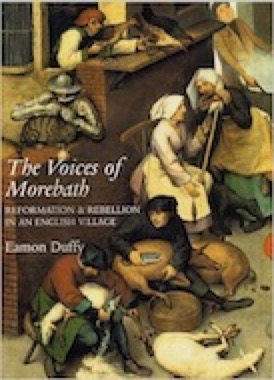
Author: Eamon Duffy
(Yale University Press)
The Voices of Morebath: Reformation and Rebellion in an English Village
Eamon Duffy interprets the words of Sir Christopher Trychay, a Catholic priest who holds a tiny English village together during the Reformation. Published in 2001 by Yale University Press, this detailed account of events in Morebath provides primary documentation along with secondary analysis. Although limited to one small part of England, comprehension of the religious upheaval that took place on a larger scale is possible by examining the lives of a few.
What makes Trychay unusual is his ability to work with Catholics and Protestants. He started as a Catholic, abided by changes implemented during the Reformation at the time of King Henry VIII, converted back to Catholicism during the reign of Queen Mary, and returned to Protestantism when Queen Elizabeth took the throne. He strove to prevent bloodshed and unnecessary heartache.
This priest kept extensive financial records. Every transaction, everything added or removed from the church, he wrote down. Trychay kept track of births, baptisms, marriages, and deaths as well, but his focus remains a monetary one.
When Catholicism was at its peak, religious art thrived. Burglaries were common, and Trychay’s church was no exception. Tributes paid for by members of his parish adorned the interior. As insignificant as Morebath seems in comparison to a large city, its problems were similar—less to steal and fight over, yet enough to cause trouble for residents. Patrons would donate an item to the church only to see it removed.
Suppression of idolatry, known as iconoclasm, resulted in the confiscation of statues, sculptures, paintings, and trinkets with symbolic meaning that Protestant authorities found questionable. Catholics of the 1500s were superstitious as well as artistic. Since church and government were intertwined, deifying a person or an object could be considered a crime. Refusal to comply with a mandate might result in death.
Trychay cooperated with the dictates of the monarch in charge, but people in his parish recoiled as Reformation orders were carried out. On a philosophical level there would never be agreement. On a legal level there could be cooperation as long as an educated minority made the decisions.
“We are forever shut out from all but the surface of Morebath’s religion,” Duffy writes. “Late medieval Christianity moved between distinct but complimentary poles—public and private, the religion of the liturgy and the religion of the heart.”
Catholics discouraged the education of anyone but the controlling elite because authorities feared the influence of outsiders would change the status quo. The Reformation was an underground movement, and no one knew for certain where a person’s sympathies lay. Protestants encouraged education and transformation. Sudden involvement of so-called underdogs threatened the establishment.
Duffy emphasizes the significance of worshipping in English rather than Latin. The liturgy was now understandable to the average villager. The church remained the focus of their existence, the glue that held their community together. Religious turmoil meant personal turmoil, even to the point of psychological disturbance and violence. Resistance to the Reformation may have been aversion to change as much as rebellion against Protestantism.
Humiliating and punishing women to control objectionable behavior Duffy describes as “a coarsening of social fibre.” Protestants allowed a woman more power and autonomy, while Catholics placed her on a maternal pedestal, a symbol of nurturing, subdued perfection. Abusive men likely had difficulty adjusting to the elevation of a woman’s status beyond her traditional roles as wife and caregiver.
Duffy presents his research well, sharing his knowledge without an overwhelming excess of detail. His admiration for Sir Christopher Trychay is apparent. While remaining sympathetic to the persecution of Catholics, he criticizes counter-Reformation rebellion. Protestants and Catholics have the right to exist side by side. His text is a worthwhile study of Renaissance theological history.
Academic Review - The Elizabethan Renaissance
February/13/2017 01:37 PM Filed: Academic Reviews
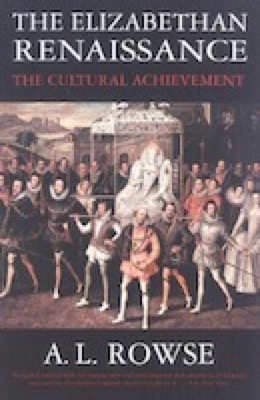
Author: A. L. Rowse
(Ivan R. Dee)
The Elizabethan Renaissance: The Cultural Achievement
A. L. Rowse divides his study of Elizabethan achievements into nine essays, each an excellent overview of major accomplishments and prominent figures. Published in 2000 by Ivan R. Dee, this text is a valuable history and humanities reference.
The Elizabethan period is characterized by the problems and social upheavals that occurred as a result of the Reformation. Rowse condemns the destruction of property and art during the extremism of the iconoclastic movement.
“The Drama as Social Expression” discusses playwrights and events that surrounded their careers, such as building theaters and outbreak of the plague. Rowse not only analyzes the lives of dramatists, he puts the popularity of their plays in correct context and provides a unified perspective of history. He emphasizes society’s naturalness and the Elizabethan tendency not to repress emotion, attributing the expansion of drama to the growth of London.
Rowse describes Elizabethan acting as declamatory, gestural, and stylized. “The actor’s delivery was that of the orator, addressed to the audience even more than to the stage.”
His background on John Lyly is essential for those interested in Court society, a playwright whose career ended in the 1590s when the boys’ companies lost favor. Shakespeare learned from Lyly’s dialogue. Rowse praises Shakespeare for his ability to write anything and appeal to the general population. The transition from drama to literature occurred in 1616.
In “Language, Literature and Society” Rowse marks a new beginning with writers Sidney and Spenser in the 1580s. He discusses Shakespeare’s “bawdy” language and defines Marlowe’s contribution as an ability to “marry splendid verse to the stage.”
Lyly is often credited as the first English novelist. Our use of the word “euphemism” originates with this writer. Rowse describes George Chapman, Ben Jonson, and John Donne as geniuses who reacted against the “dominant Elizabethan” in poetry. Chapman he calls an intellectual with a hatred for the common man. Jonson he labels unromantic and satirical. Donne, he says, was a persecuted Catholic.
England led Europe in keyboard music, establishing the basis for Western technique. Rowse elaborates on many contributions in “Words and Music,” an essay that provides a good overview, along with details a musician might appreciate. Musical developments became coordinated with poetry. Rowse remarks, “One of the significant features of Renaissance music all over Europe was its impregnation by the music of the people in song and dance.”
The madrigal, though originating in Italy, was popular in England. The ballad was written over and over with different words. Art songs were more sophisticated and lyrics did not change. Lute songs and virginals for the keyboard became popular. Instrumental music was created during the Renaissance, and chamber music in the home resounded.
In “Architecture and Sculpture” Rowse discusses how an “insular society” felt the impact of the Renaissance. He describes English work as gauche experimentation. He believes accomplishments were integrated with foreign inspiration. Architecture saw its peak in the 1580s. It no longer exhibited obvious classical influences. The most significant book on architecture was published by Sir Henry Wotton in 1624.
“Painting” is a short chapter. “One cannot say that the English reached any high accomplishment in this field, though there was an enormous amount of it, for the Elizabethans disliked blank spaces,” Rowse writes.
In “Domestic Arts” he explores applied arts such as embroidery, tapestry weaving, and furniture. Embroideries were used in costume and furnishing. Books had embroidered bindings. Even carpets with linen embroidery on canvas were popular. Gentry demanded heraldic panels on cushion covers. Costumes were a reflection of class and rank. Rowse describes Elizabethan furniture as “sparse and somewhat sombre.” People left oak pieces in their natural state.
“Science and Society” provides an overview of notable scientists and achievements. Rowse asserts that wise men led the blind in a time when most remained ignorant. Class differences prevented certain men, and particularly women, from pursuing education. Structured society frowned on disturbing accepted traditions that benefited a small percentage of the population while the majority suffered.
Improvement in the quality of maps and oceanic navigation changed the world. English mariners learned from the Portuguese and the Spanish, translating their textbooks. Rowse classifies Thomas Hariot as the most original scientific intellect among the Elizabethans. Hariot studied cartography and in 1585-1586 accompanied Raleigh to the first American settlement in Roanoke colony.
Dr. William Gilbert, a leading London physician, laid the foundations of electrical science and researched gravitation. Rowse disputes the common opinion of Bacon, claiming this scientist opposed simple induction and preferred the method of elimination.
“Nature and Medicine” discusses naturalists, doctors, and diseases. England was behind Italy, France, and Germany in medical science and city sanitation. Unsanitary practices, rats, and exposure to soldiers returning from the Netherlands in 1563 and 1603 led to the two heaviest epidemics of the plague. The last major outbreak was in 1665. Better hygiene and sanitary methods may have played a part. Evidence of severe psychological and physical incapacitation can be seen in literature. Treatment of gunshot wounds increased in importance, while psychiatry emerged as a new profession.
One of Rowse’s most informative chapters is “Mind and Spirit.” He examines theologians and philosophers, particularly those who advanced the Reformation. “Observe that, in the realm of religion and theology, the sixteenth century spent most of its mental energy on dispute,” Rowse states.
He points out that playwright Christopher Marlowe had been labeled an atheist, when in reality the writer had an “impersonal, cosmic conception of deity.” Anyone not an orthodox was considered an unbeliever. Rowse asserts the conflict between Reformation and Counter-Reformation set back intellectual progress rather than advancing it, and “tolerance came only with the relaxation of belief.” He sees Puritanism as an obstruction. At the root of the dispute may have been the Calvinist doctrine of predestination.
Rowse believes the Church of England is an idiosyncratic combination of Catholic and Protestant. His thesis points toward the Reformation as the cause of problems, whereas other historians see the Reformation as an attempt to solve them.
Academic Review - Shakespearean Negotiations
February/01/2017 03:44 PM Filed: Academic Reviews
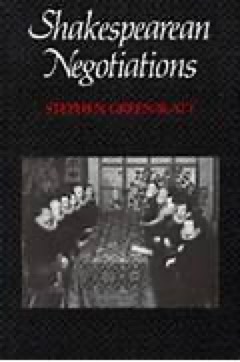
Author: Stephen Greenblatt
(University of California Press)
Shakespearean Negotiations
Stephen Greenblatt’s compilation of five essays discusses aspects of Renaissance society demonstrated in Shakespeare’s plays, four of which focus on a major genre. His book is a good secondary source, a mixture of literature and history. Published in 1988 by the University of California Press, this title is a reference for Elizabethan studies.
“The Circulation of Social Energy” serves as an introduction. Greenblatt defines “social energy” as the ability to arouse emotions or reactions across a broad spectrum. Other critics have used the term “universal” to describe Shakespeare’s talent in communicating beyond his own time. He explains how the playwright succeeded in moving concepts from one place to another, across shifting boundaries.
Greenblatt addresses a dynamic exchange between culture and time: “Power, charisma, sexual excitement, collective dreams, wonder, desire, anxiety, religious awe, free-floating intensities of experience…”
“Invisible Bullets” discusses Shakespeare’s history plays. The title refers to a reference by Native Americans to English colonists who exposed them to diseases for which they had no immunities. Since the Elizabethan audience found history and politics interesting, Shakespeare capitalized on the opportunity to present his unique mix of historical fact and engaging drama. The playwright’s work is an interpretation of events found nowhere else.
Greenblatt states that his plays are concerned with the production and containment of subversion and disorder. “Elizabethan playing companies contrived to absorb, refashion, and exploit some of the fundamental energies of a political authority that was itself already committed to histrionic display and hence ripe for appropriation.”
“Fiction and Friction” is an essay on sexual identity and the humorous situations in romantic comedies. In Elizabethan England, boys acted the roles of women, leading to contemporary discourse about sexuality.
According to Greenblatt, Shakespeare’s comedies contain sexual energy. The playwright used this erotic power in the development of plots that would interest an audience, so the “heat” takes place internally… out of sight… in the imagination. Shakespeare found ways to present sexual friction in his dialogue and in situational tension.
In the fourth work, “Shakespeare and the Exorcists,” Greenblatt provides background on the staging of exorcisms. During the Renaissance, educated people knew demonic possession was contrived, used as a tool to manipulate, or sometimes, a manifestation of mental illness. Within Shakespeare’s work, especially his tragedies, exorcism was equated with fraud and illusion, often perpetrated by the church.
Revealing is the significance of exorcism in Renaissance England. Spiritual possession is an issue rarely discussed in the twenty-first century. In Shakespeare’s time, the strangeness of this phenomenon puts it into the present-day category of Ripley’s Believe It or Not.
“Martial Law in the Land of Cockaigne” is an unusual essay on the use of anxiety and terror and its manifestation in Elizabethan drama. “The Tempest” is a primary example. The play is filled with mysticism and superstition, instigated by imagined and real threats. These tactics, as seen in Shakespeare’s work, were part of the Renaissance.
The culture and social energy of Renaissance society will never die. Not all writers were capable of keeping this life force alive, but Shakespeare succeeded.
Academic Review - An Oxford Guide: Shakespeare
January/23/2017 10:55 PM Filed: Academic Reviews
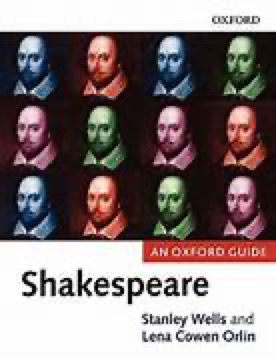
Author: Stanley Wells and Lena Cowen Orlin
(Oxford University Press)
An Oxford Guide: Shakespeare
This book is an excellent secondary reference source. Stanley Wells and Lena Cowen Orlin present an overview of Shakespeare’s career from historical and literary standpoints, providing detailed bibliographies. Numerous experts contributed, creating an unbiased collection of theses. Published in 2003 by Oxford University Press, this compilation is similar to an encyclopedia. Divided into four parts, the text covers Shakespeare’s life, genre, criticism, and afterlife.
Martin Ingram, a professor at Brasenose College, writes an interesting essay titled, “Love, Sex, and Marriage.” Despite the Renaissance notion that marriage is preferable, the statistical reality was nothing close to what church leaders and conservatives proposed. Pressure for a woman to marry, and unfortunate consequences of coerced or thwarted unions, drove much of Shakespeare’s drama, comedy, and tragedy.
“Demographic calculations indicate that at any given moment in this period up to forty-five percent of women were either not yet married or widowed, while the proportion of women who never married was on the increase and was to exceed one in five shortly after Shakespeare’s death,” Ingram writes.
Though experts state the playwright’s work surpasses time and place, Ingram does not take scenes out of Elizabethan context. “While many of the issues still have enormous resonance in the present day, they can be fully understood only in the very different cultural context of Shakespeare’s own time.”
Shakespeare was perceptive and saw women’s rights advocates emerge long before the majority took feminist concerns seriously. Likely, he could foresee the long-term impact of his dramatic statements, and it is certain he anticipated upheaval and transition.
William C. Carroll, a professor at Boston University, presents “Romantic Comedies,” an overview of Shakespeare’s strongest plays and a lighthearted reflection of English Renaissance society. “The romantic comedies are termed ‘romantic’ in part because their plots and major themes involve love and desire,” Carroll explains. “They are related to the so-called ‘romances’ in that both types of play have similar plots, typically involving some frustration of true love, a journey by a lover, improbable or even magical events, and a resolution in marriage or the promise of marriage arising from some discovery about identity.”
This winning formula drew audiences to the theater in the sixteenth and seventeenth centuries, and today, mesmerizes people at the cinema. Romance novels, trashed by critics as frivolous, utilize plot structure familiar to Shakespeare. The playwright’s misunderstandings, mistaken identities, and unlikely scenarios are hailed as creative art, yet contemporary writers dare not proceed along the same plot lines.
Though scholars are aware Shakespeare practiced his craft for money, academics ignore the monetary aspect. The college crowd appealed to Shakespeare—many were his comrades—but he acquired his education through independent reading and experience. His success is not based on how much he knew, but on how much he sold.
Bruce R. Smith, a professor at Georgetown University, contributes a thesis titled, “Studies in Sexuality.” The Elizabethan audience may have been different in mores and morals, but people manifested timeless instincts. “Bodies are as essential to plays in performance as electric signals are to videos. Actors have bodies, listeners/spectators have bodies, and the transactions among them in the course of a performance are energized by various forms of desire,” Smith says.
Libido and need to create a suitable environment to raise children influence the behavior of both genders, providing an eternal basis for plots. By placing obstacles to fulfillment, stories can be manipulated, scene after scene, until the couple does or does not reach the culmination.
David Kathman, a freelance scholar, debates the legitimacy of Shakespeare’s byline in “The Question of Authorship.” He makes a convincing case against those who claim Shakespeare did not write the works we now attribute to him. Numerous theories have denied the authenticity of the name “William Shakespeare,” even asserted the Bard was someone else. Some believe a group of playwrights and poets wrote under one name.
“Anti-Stratfordians try to discount the evidence for Shakespeare’s authorship using a variety of tactics, most of which involve distorting the facts and their historical context,” Kathman states. “In addition to replacing evidence with conspiracy theories, anti-Stratfordians usually attack Shakespeare personally, sometimes quite viciously. They depict Stratford as an uncultured cesspool which could never have produced a great writer, and Shakespeare himself as a greedy, semi-literate burgher.”
Although the playwright did collaborate with other writers on a few plays, the academic community does not take the authorship question seriously. “For most anti-Stratfordians, these attacks on William Shakespeare of Stratford have one primary purpose: to clear the way for their own candidate as the ‘real’ Shakespeare,” Kathman adds.
Social life and love in Renaissance England infiltrate every scene and every line of Shakespeare’s canon. Continued evaluation of this famous man brings to light modern attitudes toward the Elizabethans, what we’ve learned from them, and what we condemn in their behavior. This obsession with every word he wrote has led to new discoveries, while scholars enlighten one another with conjecture.
Would Shakespeare have appreciated this excessive pondering? No one will know for certain, but this acclaim has kept his name alive.
Academic Review - Everyday Life in Renaissance England
January/12/2017 12:21 PM Filed: Academic Reviews
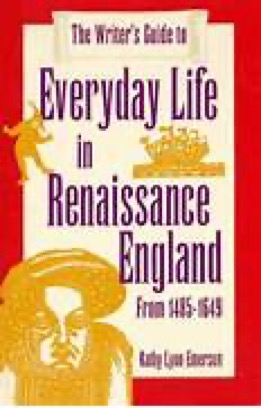
Author: Kathy Lynn Emerson
(Writer’s Digest Books)
The Writer’s Guide to Everyday Life in Renaissance England from 1485-1649
This reference tool is a compilation of essential information for writers. Kathy Lynn Emerson researched and consolidated her material into three sections and twenty succinct chapters. Her work is a documented secondary source with extensive bibliographies. She provides a select list for every topic. Fiction writers, in particular, will find this book useful. She includes details historians may gloss over as unimportant, all necessary to create realism in a short story or a novel. For Elizabethan drama or Renaissance history students, this guide can be utilized like an encyclopedia. Published in 1996 by Writer’s Digest Books, the text is packed full of trivia.
Divided into three parts, the book starts with Everyday Life, a section that includes clothing, accessories, food, drink, architecture, furnishings, marriage, family, health, and physicians. “Physic and Physician” is Emerson’s most enlightening chapter, providing a down-to-earth perspective on English Renaissance medicine. She begins this chapter discussing the widespread notion that disease was caused by supernatural forces. Although people acknowledged natural causes, they didn’t know that malnutrition and poor sanitation led to illness. Emerson writes, “Epidemics were regarded as God’s punishment for man’s sins.”
The Barber-Surgeons was the first medical guild in England. They engaged in procedures such as blood-letting, minor surgery, pulling teeth, cutting hair, and shaving. The apothecaries (pharmacists) were affiliated with the grocers. Doctors received degrees after years of schooling. Alarming is their method of study. The use of cadavers was not prevalent, so interns did not gain hands-on experience.
“Medical students did not often come in direct contact with patients. They read old books, attended lectures and got their degree by ‘spoken disputation,’” Emerson explains. “A man’s humour (sanguine, choleric, phlegmatic or melancholic) played an important role in treating his ailment. Physicians relied heavily on water casting, the diagnosis of the balance of the humours by examination of the patient’s urine.”
The most lethal disease during the Renaissance was the plague. There were numerous outbreaks and smaller epidemics. Emerson states that outbreaks started in early summer and ended in November, with a fatality rate of sixty to eighty-five percent for the unfortunate people who contracted the Bubonic form. Among the most absurd preventive treatments: the practice of drinking mummy, which was dry, dead human flesh. Another strange procedure was wearing arsenic next to the skin. Burning old shoes? They were thought to have purifying fumes.
The treatment of common ailments could lead to a patient’s death, and if not fatal, these “cures” were enough to make a sick person even sicker. For example, asthma was treated with wine in which woodlice had been steeped. An infertile woman drank an elixir from mare’s milk, rabbit’s blood, and sheep’s urine. She probably wouldn’t have had much of an appetite for anything, including sex, after swallowing this cocktail. A patient with a toothache was thought to have worms or “unbalanced humours” and chewed horehound root.
Emerson’s second part, Government and War, is a compilation of chapters that constitute a historical overview: government, monarchs, nobles, commoners, crime, punishment, money, war, peace, and seafaring. “A Seafaring Nation” will appeal to those looking for adventure. In our age of high-speed air travel, the slow, dangerous contrast of living on a filthy ship for months makes a several hour flight with airport delays seem like heaven.
Emerson starts with a description of life at sea. The closer the ship was to shore, the better their diet. On prolonged voyages, the crew relied heavily on beef and pork cured in brine, along with rotten biscuits and fresh fish. Even porpoise was boiled or fried. Lack of vegetables and fruits led to scurvy, a disease characterized by fatigue, body aches, and loose teeth. A typical ration was one gallon of beer, one pound of biscuit, and two pounds of pork and peas, four days a week. Those who sailed were likely intoxicated.
Sanitary conditions were poor. The ship would have smelled like human excrement and urine with rats and roaches running wild. Most vessels leaked, so drippy areas were stuffed with clothes and animal hides and sailcloth. “Mariners were constantly wet,” Emerson explains. “Cold water not only sloshed in the bilges with the constant rolling of the ship, it also dripped down through leaking decks and topsides. After storms, there were always more leaks.”
To make the hellish environment worse, people onboard were superstitious. Sailors did not learn how to swim to inspire confidence, a ridiculous way to flaunt navigational skills. “Storm-driven ships were believed to be bewitched and anyone suspected of being a witch might be thrown overboard,” Emerson writes. “Evil could also be driven away by nailing two red-hot horseshoes to the main mast.”
After thirty days at sea with high waves and brutal winds, a drunk, sick officer could blame an unsuspecting individual on the ship for his woes and toss the person to the sharks. Part of this erratic behavior and psychotic paranoia could have been induced by nutritional imbalances and untreated illness. The longer the voyage, the longer the agony, so only the mentally stable could work at sea.
Emerson’s distinction between privateers and pirates is essential to understanding Elizabethan England. A simplistic definition might designate one good and one bad, or one legal and one illegal. Unfortunately, the definition is blurred and would depend on national loyalty. Often hired by the government, a privateer is employed to rob and pillage from specifically designated ships. A pirate is a criminal. Or, another way of stating that a pirate acted on his own behalf. Piracy was illegal, but few were tried or hung.
Emerson reveals the local gentry often financed their escapades. “The practice of privateering predates the creation of all national navies,” she says. “By the start of the sixteenth century, privateers were regularly used to augment the English navy.”
Romanticized today, marauders fill the pages of historical fiction. With questionable integrity, these bad guys (and a few gals) made history for leading lives out of the ordinary. Nothing films better and plays better on a stage or in the pages of a novel.
In Renaissance Society, the third and longest section, Emerson discusses education, employment, entertainment, language, urban and rural life, travel, and superstition. “Witches, Magic, Necromancy and Superstition” describes a world with crazy laws based on inner fears, church-induced phobias, and insufficient education. Fortunately, today we don’t turn on the news and hear about the execution of a woman with supernatural power.
Beginning with the English witch trials, Emerson writes of this strange phenomenon during the Elizabethan period. When people feel they cannot control life, they often blame a circumstance or another human being. Although passing the buck is common in our time as well, in Renaissance England this natural tendency escalated to lunacy. Most envision women tied to stakes and burned for indefinable crimes or curses.
In England, witches were not burned, but hung. Religious fanaticism was the basis for this insanity. By 1579, church officials looked for birthmarks on the body to determine whether a woman was possessed by the devil. Desperately needing an explanation for a death in a family or a scapegoat for a streak of bad luck that may have befallen a village, these men of God could give suspicious women, many of them widows, the death sentence.
According to Emerson, informational pamphlets about what witches did were distributed to the public. “They were some of the most popular reading matter of their day,” she remarks. “Essex held more witch trials than elsewhere in England. About 250 cases were tried between 1560 and 1600, but not all of these witches were executed. Many were punished by public penance or jail time. Throughout England, the percentage of trials ending in conviction varied but the high was 42 percent during the period from 1645 to 1647.”
In France, ninety-five percent of trials turned into convictions. Those executed were burned at the stake for heresy under the dictates of the Catholic Church.
Tragically, the same hysteria emerged in Colonial America during the Salem witch trials. Like the English and French, colonists looked for sinister behavior among women and accused innocent citizens of crimes they had never committed. Where no proof of witchcraft existed, ministers of established rank fabricated evidence.
Emerson writes, “Under Roman law, sorcery was only a crime if it was practiced with evil intent and caused damage. However, after 1541, prognostication and other kinds of sorcery, including using magic for treasure-seeking or to recover stolen goods or to provoke unlawful love, became felonies without benefit of clergy.”
This reference guide is fascinating as well as educational and every bit as riveting as an action novel. Without the bias typical of some scholars, Emerson presents facts in a straightforward manner.
Shakespeare - Moral Value
November/16/2016 01:21 PM Filed: Shakespeare

Credit: Brice Stratford
(Wikimedia Commons)
Shakespeare: Moral Value
“Shakespeare and the Renaissance Concept of Honor” is based on a thesis presented to Harvard University in 1950. Curtis Brown Watson divides his work into two parts. The first discusses the Renaissance idea of honor, the second addresses William Shakespeare’s use of this concept.
A good source that presents original analysis, this study is essential for students of history and English literature. Published by Princeton University Press in 1960, the text is important to understand the definition of honor in Shakespeare’s time and encourages the scholar to develop an independent interpretation of the playwright’s work.
Watson provides a list of seven critical approaches in “Foreword to Part II: Does Drama Have a Moral Function?” He invites us to judge which position has the greatest relevance.
7. “It is impossible to understand Shakespeare if one does not consider the moral values which gave his plays their structure and meaning. In Shakespeare there is a profound interpenetration of moral and of aesthetic values.”
Watson believes any attempt to separate Shakespeare from the time in which he lived while analyzing the playwright’s work will lead to invalid statements and a thesis based on present attitudes and contemporary class structure. Moral issues pertaining to English Renaissance society cannot be ignored.
Women were not permitted to appear on stage, much less allowed to interpret a writer’s words, or assume the duties of a man. Today, women perform and critique Shakespeare in great numbers, revitalizing our perspective. Feminism has modernized literary criticism, making it impossible to stay within the moral values of the Renaissance.
Shakespeare - Allegory and Symbolism
November/10/2016 04:29 PM Filed: Shakespeare

Credit: Brice Stratford
(Wikimedia Commons)
Shakespeare: Allegory and Symbolism
“Shakespeare and the Renaissance Concept of Honor” is based on a thesis presented to Harvard University in 1950. Curtis Brown Watson divides his work into two parts. The first discusses the Renaissance idea of honor, the second addresses William Shakespeare’s use of this concept.
A good source that presents original analysis, this study is essential for students of history and English literature. Published by Princeton University Press in 1960, the text is important to understand the definition of honor in Shakespeare’s time and encourages the scholar to develop an independent interpretation of the playwright’s work.
Watson provides a list of seven critical approaches in “Foreword to Part II: Does Drama Have a Moral Function?” He invites us to judge which position has the greatest relevance.
6. “Part of Shakespeare’s greatness lies in his ambiguity. Therefore we can consider his plays a rich mine for a wide variety of interpretation of ‘meaning’ and ‘pattern.’ The critic should seek for allegory and symbolism and thus discover meanings which will be suggestive, though not necessarily definitive or final.”
Not everyone values vagueness. For a critic, an ambiguous work is a blank page waiting to be filled. The more interpretations that can be gleaned from a play, the better it is for an academic. Some scholars carry this procedure to an extreme, reaching for symbols and allegories where none exist.
All literature is potentially ambivalent. Life itself is contradictory with hidden meaning. A savvy reader must be aware that every piece of criticism is as much a statement of the pundit’s personality as it is a valid interpretation.
The lack of finality, the never-ending hashing over of any writer’s words, does nothing but provoke new criticism and encourage new scholars. As time passes, the accumulation of material on Shakespeare has become overwhelming, even intimidating, giving the impression that his work is incomprehensible to the majority. Shakespeare wrote for the majority. It is only today that he has been classified as a literary, opposed to a commercial, playwright. Looking for meanings that are suggestive, though not definitive, is an activity engaged in by colleges and universities.
Shakespeare - Meaning and Interpretation
November/08/2016 02:19 PM Filed: Shakespeare

Credit: Brice Stratford
(Wikimedia Commons)
Shakespeare: Meaning and Interpretation
“Shakespeare and the Renaissance Concept of Honor” is based on a thesis presented to Harvard University in 1950. Curtis Brown Watson divides his work into two parts. The first discusses the Renaissance idea of honor, the second addresses William Shakespeare’s use of this concept.
A good source that presents original analysis, this study is essential for students of history and English literature. Published by Princeton University Press in 1960, the text is important to understand the definition of honor in Shakespeare’s time and encourages the scholar to develop an independent interpretation of the playwright’s work.
Watson provides a list of seven critical approaches in “Foreword to Part II: Does Drama Have a Moral Function?” He invites us to judge which position has the greatest relevance.
5. “The ‘meaning’ of Shakespeare’s plays changes in accordance with the preconceptions and bias of each new generation of readers. The ‘meaning’ is subjective, not objective.”
Every academic since the English Renaissance has sought meaning in Shakespeare’s work. All find it, and all are right, from a limited standpoint. When a critic searches for a message, a moral, or a purpose in a piece of literature, the quest will lead to a treasure. This treasure may be self-created, but it has value to those who respect literary analysis.
A new generation brings a fresh outlook on life, applied to everything from food to Shakespeare. A so-called objective reader is filled with ideas and attitudes that color the material, and when this work is filtered through a selected lens, distortions, both good and bad, result.
This process is comparable to a cameraman regarding a scene he wants to film for a specific reason. He will choose an angle, add or remove light, and often apply a filter to create the desired effect. In the end, this scenario will be the cinematographer’s work of art, not a naked view of what he captured with his camera.
All criticism of Shakespeare is subjective, based on cultural, religious, and educational background.
Shakespeare - Tragedy and Religion
November/03/2016 01:45 PM Filed: Shakespeare

Credit: Brice Stratford
(Wikimedia Commons)
Shakespeare: Tragedy and Religion
“Shakespeare and the Renaissance Concept of Honor” is based on a thesis presented to Harvard University in 1950. Curtis Brown Watson divides his work into two parts. The first discusses the Renaissance idea of honor, the second addresses William Shakespeare’s use of this concept.
A good source that presents original analysis, this study is essential for students of history and English literature. Published by Princeton University Press in 1960, the text is important to understand the definition of honor in Shakespeare’s time and encourages the scholar to develop an independent interpretation of the playwright’s work.
Watson provides a list of seven critical approaches in “Foreword to Part II: Does Drama Have a Moral Function?” He invites us to judge which position has the greatest relevance.
4. “Religious values are absent from Shakespearean tragedy since the tragic view and the religious view are incompatible.”
One issue that makes the tragic view and the religious view incompatible is suicide. From a Christian standpoint, killing oneself is a sin, inconsistent with church doctrine. Self-destruction depicted as noble or admirable is perceived as the ultimate cowardice. In this sense, a tragedy cannot be religious in the Western world.
Since most critics who analyze Shakespeare are Western in culture and belief, the term “religious” will often be synonymous with “Christian.” The tragic element can be lessened if a writer approaches the suicidal character with condemnation, yet Shakespeare was not inclined to do this. He presents a story in a straightforward manner without judging every action, making a scriptural view difficult to maintain.
Shakespeare - Christianity and the Renaissance
November/01/2016 04:05 PM Filed: Shakespeare

Credit: Brice Stratford
(Wikimedia Commons)
Shakespeare: Christianity and the Renaissance
“Shakespeare and the Renaissance Concept of Honor” is based on a thesis presented to Harvard University in 1950. Curtis Brown Watson divides his work into two parts. The first discusses the Renaissance idea of honor, the second addresses William Shakespeare’s use of this concept.
A good source that presents original analysis, this study is essential for students of history and English literature. Published by Princeton University Press in 1960, the text is important to understand the definition of honor in Shakespeare’s time and encourages the scholar to develop an independent interpretation of the playwright’s work.
Watson provides a list of seven critical approaches in “Foreword to Part II: Does Drama Have a Moral Function?” He invites us to judge which position has the greatest relevance.
3. “The Renaissance was a Christian age. Therefore Shakespeare, like every other writer of his age, must have been profoundly influenced by Christianity.”
Since Christianity had a tight hold on the morals of the Renaissance, often counterproductive to advancement in the arts and sciences, Shakespeare would have felt an inhibiting impact. The conflicts of the Reformation would have helped him portray interesting, diverse characters and tension-filled scenes, but the church would have been a hindrance, not an aid, to creative achievement. As he wrote, he sought ways to express himself without offending people or inviting censorship.
Euphemism, an affected though ornate way of writing, was one stylistic method. John Lyly started this tradition. Shakespeare learned from Lyly and applied this technique. Although the use of flowery, suggestive phrases with a distinct, rhythmic sound is far more pronounced in Lyly’s plays and novels, its application in Shakespeare’s material is noticeable. Euphemism made it possible for a playwright to say anything, even describe sexual acts, by the strategic placement of words. Only the educated would have understood, one reason why no one stopped careful writers in an age of prudish restraint.
Scholars who incorporate religious beliefs in the interpretation of Shakespeare’s work are making a mistake. In the development of a scene, Shakespeare would have been capable of seeing a situation from the viewpoint of a Christian or an atheist based on the needs of his plot.
Shakespeare - Philosophical Value
October/27/2016 11:25 PM Filed: Shakespeare

Credit: Brice Stratford
(Wikimedia Commons)
Shakespeare: Philosophical Value
“Shakespeare and the Renaissance Concept of Honor” is based on a thesis presented to Harvard University in 1950. Curtis Brown Watson divides his work into two parts. The first discusses the Renaissance idea of honor, the second addresses William Shakespeare’s use of this concept.
A good source that presents original analysis, this study is essential for students of history and English literature. Published by Princeton University Press in 1960, the text is important to understand the definition of honor in Shakespeare’s time and encourages the scholar to develop an independent interpretation of the playwright’s work.
Watson provides a list of seven critical approaches in “Foreword to Part II: Does Drama Have a Moral Function?” He invites us to judge which position has the greatest relevance.
2. “Since Shakespeare was not a philosopher, he was not concerned with questions of value.”
Shakespeare explored questions of value as they relate to his plays and the portrayal of his characters. Even a story that attempts to avoid any philosophical statement makes one in the act of refraining. It is impossible for a writer to put an idea to paper without consciously or subconsciously weaving buried notions and perceptions into the fabric of the plot. A playwright might make a divergent assertion, or through the vivid depiction of a protagonist, take a social stance.
The tougher the character—the stronger the impact—the deeper the meaning. Scholars may disagree on what his connotations imply, but messages are threaded throughout Shakespeare’s dramatic words. Like fine gold filament that catches the eye, his hidden nuances invite philosophical pondering.
Shakespeare - Point of View
October/25/2016 10:38 PM Filed: Shakespeare

Credit: Brice Stratford
(Wikimedia Commons)
Shakespeare: Point of View
“Shakespeare and the Renaissance Concept of Honor” is based on a thesis presented to Harvard University in 1950. Curtis Brown Watson divides his work into two parts. The first discusses the Renaissance idea of honor, the second addresses William Shakespeare’s use of this concept.
A good source that presents original analysis, this study is essential for students of history and English literature. Published by Princeton University Press in 1960, the text is important to understand the definition of honor in Shakespeare’s time and encourages the scholar to develop an independent interpretation of the playwright’s work.
Watson provides a list of seven critical approaches in “Foreword to Part II: Does Drama Have a Moral Function?” He invites us to judge which position has the greatest relevance.
1. “Shakespeare was an objective dramatist who tried to describe every aspect of the human scene without committing himself to the point of view of any of his dramatic creations.”
Although Shakespeare may have written objectively, it would have been impossible to portray a character without committing himself to a point of view. Understanding the motivation behind a protagonist’s actions is essential to a playwright’s success. This does not mean that a writer must empathize with a villain, but lifelike presentation involves the ability to understand the reasons behind immoral behavior.
Shakespeare portrayed historical and tragic figures with realism. He desired to make these remote individuals accessible for the duration of a play. The average theater patron of the Renaissance went to see his productions for the entertainment alone. If Shakespeare had not committed himself to the viewpoints of his notable characters, his fame would have been short-lived.
ForeWord Review - Haunted Plantations of the South
July/09/2015 10:39 AM Filed: ForeWord Reviews

Supernatural phenomena and fireside legend haunt the pages of this spooky history text. Richard Southall explores the mansions of a bygone era, visiting seven states notorious for paranormal activity. Creepy and fascinating, this compilation of unforgettable stories defies explanation. Even a seasoned skeptic may find it difficult to disprove the strange events that intrude on the now tranquil, regal homes featured in his book, all places that were once the focal point of war during one of the most tumultuous times in America.
ForeWord Review - America and WWI
March/06/2015 11:09 AM Filed: ForeWord Reviews

A sophisticated history text integrates the practical details of a guide in this informative and illustrative look at World War I. Straightforward in approach yet frequently eliciting an emotional response, Van Ells delivers a powerful evaluation of the American doughboys and the war that few want to talk about any more. Often perceived as a prelude to World War II, the Great War left behind countless broken hearts and living souls with bodies wounded beyond repair.
ForeWord Review - America Invades
February/16/2015 01:30 PM Filed: ForeWord Reviews

This informative yet entertaining history text presents a factual account of United States military involvement throughout the world. Alphabetically listed, every country the US has ever entered on a battle mission or in an official capacity makes an appearance in this well-researched reference tool, a concise book that is pro-American without being ethnocentric. Kelly and Laycock explore everything from territorial acquisition to devastating war to beneficial assistance, even touching lightly on cultural indoctrination.
ForeWord Review - How the West Won
May/27/2014 01:28 PM Filed: ForeWord Reviews
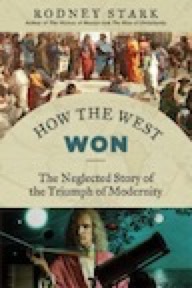
This clarifying history title dispels misconceptions and asserts supremacy in an educated yet ethnocentric view of global events. Divided into five parts, this exploration commences in 500 BC and ends after 1750 AD. From classical beginnings and the so-called Dark Ages to medieval transition and the dawn of modernity, the text delves deeply into everything from the trivial and mundane to the serious and life altering. Though people who remain socially unbiased may find this approach somewhat jarring, the book is amply annotated and offers an extensive bibliography.
ForeWord Review - Khrushchev's Russia
September/17/2013 08:42 AM Filed: ForeWord Reviews
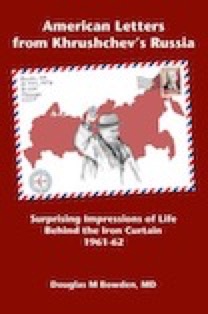
This memoir is a fascinating glimpse into the workings of a competitive country at a time when the majority of Americans were allowed only a distant view. A candid look at daily life in the former Soviet Union from the perspective of a foreign exchange student, this informative collection of letters reveals the good and the bad behind the Iron Curtain. Filled with curious details and funny incidents, every page presents a real-life, sometimes even mundane, aspect of existence in Russia during the Cold War era.
ForeWord Review - Myth, Memory and Massacre
July/24/2013 09:45 AM Filed: ForeWord Reviews
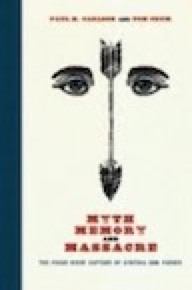
This critical look at a controversial altercation between US military and Native Americans during the nineteenth-century Battle of Pease River disputes the validity of established records. Exploring background, sources, reports, and reminiscences, authors Carlson and Crum claim that evidence has been ignored or misinterpreted. More broadly, they investigate the meaning of myth and folklore in historical analysis.
ForeWord Review - Anything Goes
July/05/2013 09:42 AM Filed: ForeWord Reviews
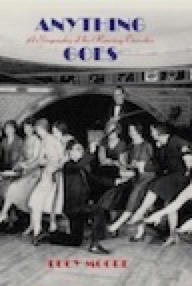
A prolific interlude of artistic achievement in film, literature, and music, the Roaring Twenties may be the most important decade of the American twentieth century. Known as the Jazz Age, this fascinating post-war era of Prohibition and flappers, frivolity and instant gratification, has mesmerized historians throughout the world. Moore’s enlightening, well-researched text will appeal to scholars as well as a general audience.
ForeWord Review - Swiss Made
May/19/2013 09:31 AM Filed: ForeWord Reviews

Switzerland is an incubator for success and controversy. Breiding explores every facet of the country’s economic environment, from the earliest beginnings in the Middle Ages to the intense competition in the twenty-first century. This quality hardcover will appeal to an audience far removed from business, reaching into the arts and sciences.